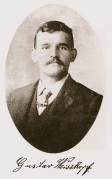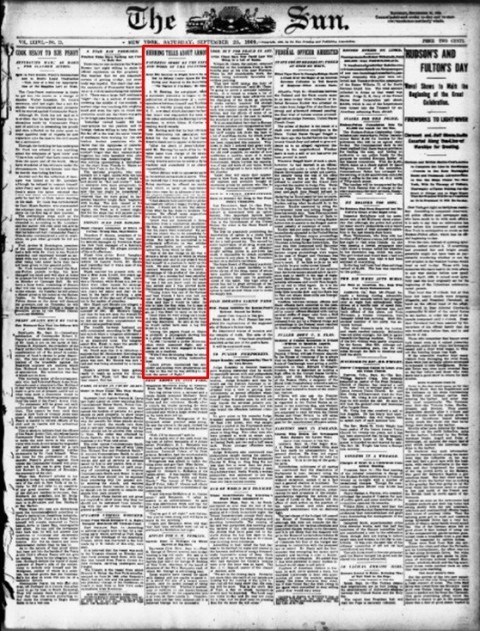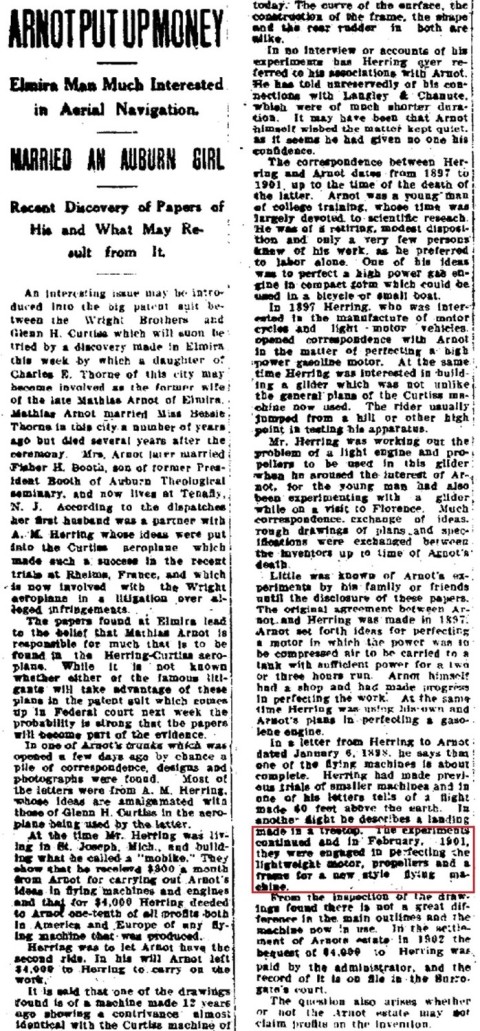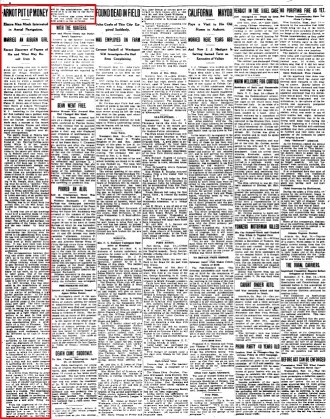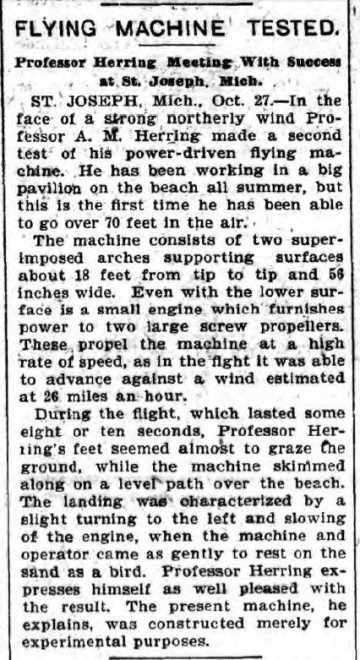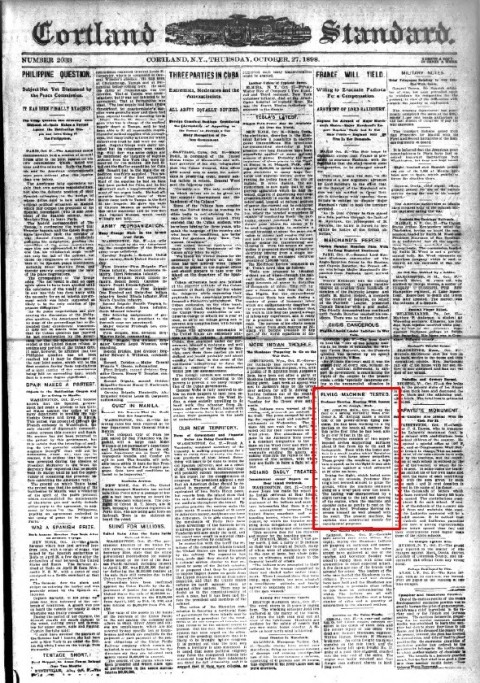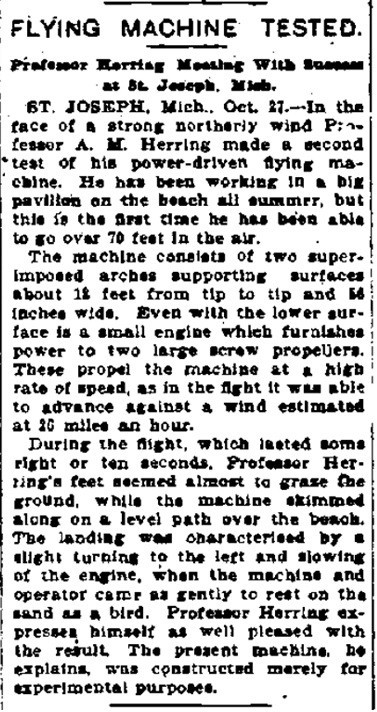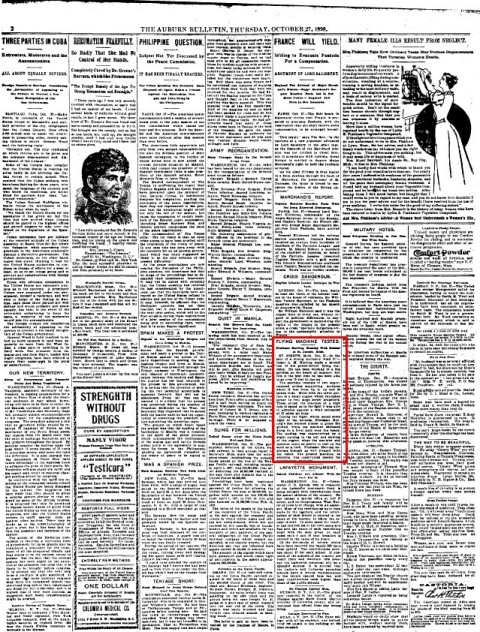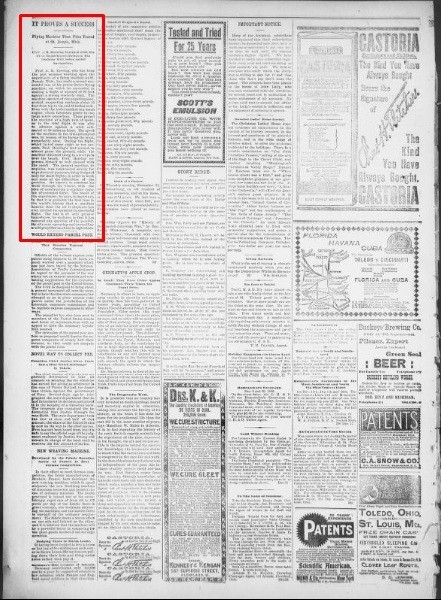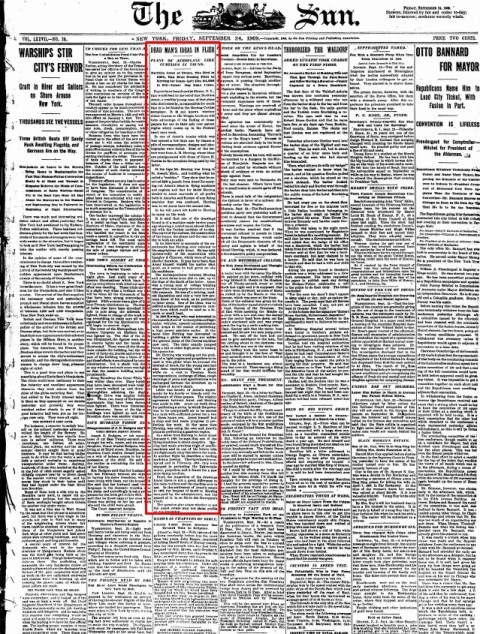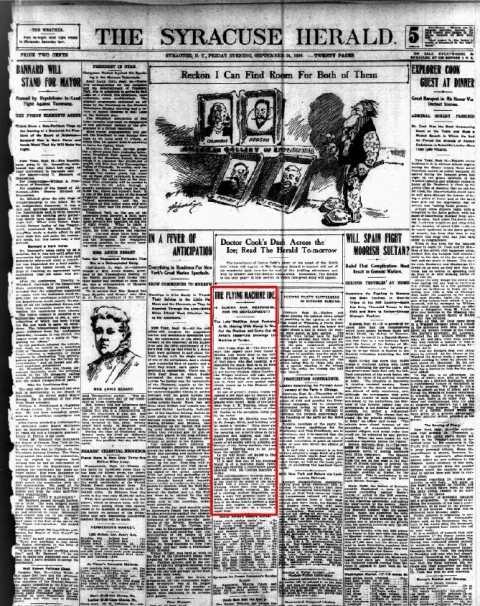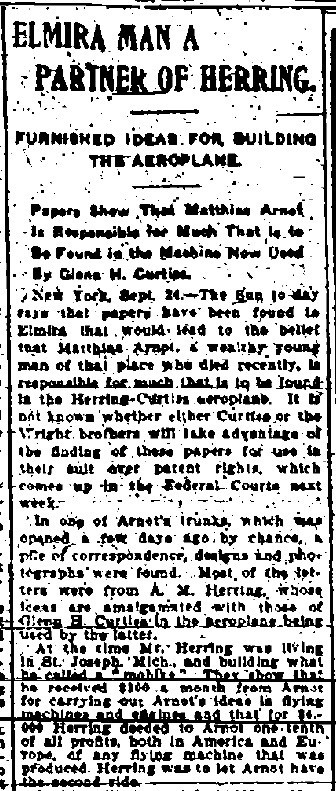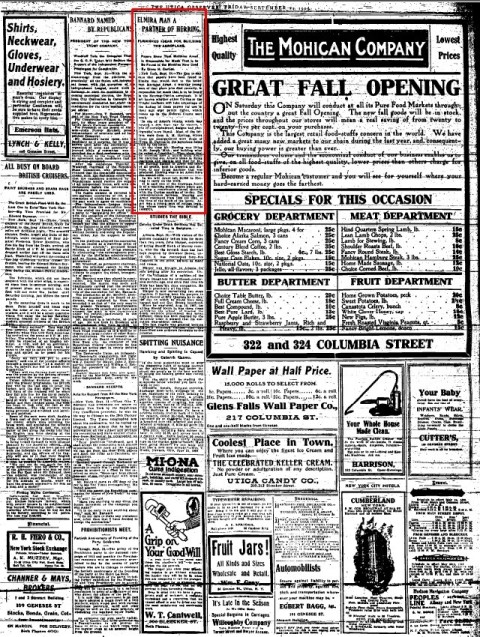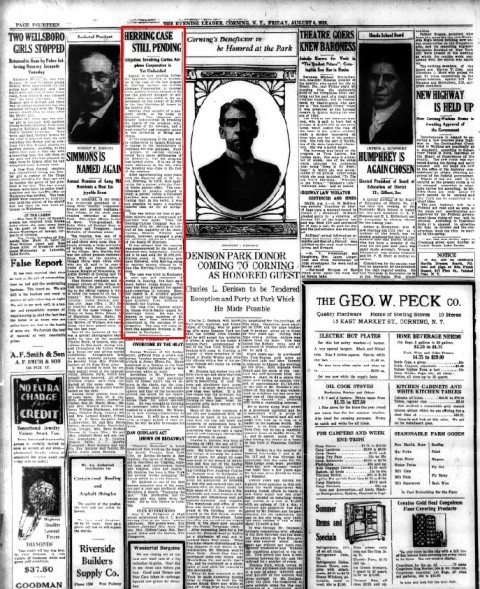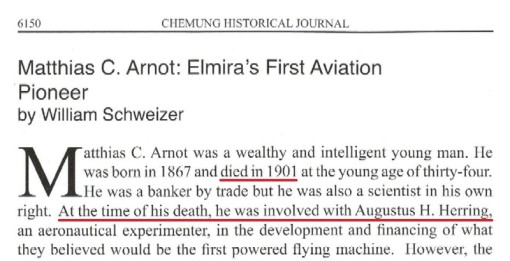The Link: Whitehead-Herring
From 1897 until 1901, Mathias C. Arnot and Augustus M. Herring developed aircraft together. Both contributed inventions and ideas to their partnership. And while Herring did the work, Arnot, a banker, paid the bills.
The Herring-Arnot aircraft made a brief, powered, sustained (but allegedly not controlled) flight in 1898. From then on, Herring claimed to have made history's first powered flight. (For this, the Wright brothers litigated against him until he died.)
The Herring-Arnot partnership ended 1901 when Arnot suddenly died. Shortly before his death, they had ordered a Whitehead motor for their latest aircraft. (We have the Wright-Chanute correspondence to thank for recording this.)
The full extent of cooperation between Herring-Arnot and Whitehead is the subject of ongoing research. Herring flew hang-gliders alongside Whitehead in New York, 1897. The Herring-Arnot aircraft disclosed in 1898 was almost identical to Whitehead's 1897 glider.
New York Sun, Sept. 25, 1909, p.1
"In 1898 I invented a power driven machine which sustained flight, and in 1900 and 1901 we were engaged in experiments on a machine. [ ] Arnot always maintained that simplicity ans success were synonymous and it was to this end he was striving to unlock the secret of flight."
Auburn Weekly Bulletin, Sept. 28, 1909, p.2
"[Arnot] was a partner of A.M. Herring whose ideas were put into the Curtiss-aeroplane which made such a success at the recent trials in Rheims, France, and which is now involved with the Wright aeroplane in a litigation over alleged infringements.
...in February 1901 they [Herring/Arnot] were engaged in perfecting the lightweight motor, propellers and a frame for a new style flying machine."
Cortland Standard, Oct. 27, 1898, p.1
"...A.M.Herring made a second test of his power-driven flying machine [ ] the first time he has been able to go over 70 feet in the air."
Auburn Journal, Oct. 27, 1898, p.2
"..a small engine [ ] furnishes power to two large screw propellers. These propel the machine at a high rate of speed, as in the flight it was able to advance against a wind estimated at 26 miles an hour. During the flight, which lasted some eight to ten seconds, Professor Herring's feet seemed almost to graze the ground while th machine skimmed along on a level path."
Perrysburg Journal, Dec. 3, 1898, p.8
"...the experiment [ ] is probably the first time in the world's history that a machine heavier than air [ ] carried its operator in successful flight."
New York Sun, Sept. 24, 1909, p.1
"The correspondence between Herring and Arnot dates from 1897 to 1901, up untl the time of death of the latter. [ ] Herring [ ] opened correspondence with Arnot in the matter of perfecting a high power, gas motor. At the same time, Herring was interested in building a glider. [ ] The rider usually jumped from a hill. [ ] One of [Arnot's] ideas was to perfect a high power gas engine in a compact form. [ ] One of the drawings [shows] a contrivance almost identical with the Curtiss machine of to-day.
[ ] ...in February 1901 they were engaged in perfecting the lightweight motor, propellers and a frame for a new style flying machine. [ ] In the settlement of Arnot'as estate in 1902, the bequest of $ 4,000 to Herring was paid by the administrator."
Syracuse Herald, Sept. 24, 1909, p.1
Utica Observer, Sept. 24, 1909, p.8
Corning Evening Leader, Aug. 26, 1926, p.14
Chemung Historical Journal, Dec. 2009, by William Schweizer
At the time of his sudden death of a ruptured appendix, late July 1901, Matthias Arnot was funding Augustus Herring in an attempt to build a manned, powered aircraft. The significance of this fact is: in their correspondence of early July 1901, Octave Chanute and Wilbur Wright refer to Arnot having just ordered a motor from Whitehead. Clearly, Whitehead's motor expertise was to be used to get the new Herring-Arnot powered aircraft airborne.
The author of the above, 10-page article, William Schweizer, founded one of America's oldest aviation companies in 1930 to build gliders. He's a member of the Soaring Hall of Fame. His Company, Schweizer Aircraft, is now a part of Sikorsky Co. next to Bridgeport, Connecticut.

